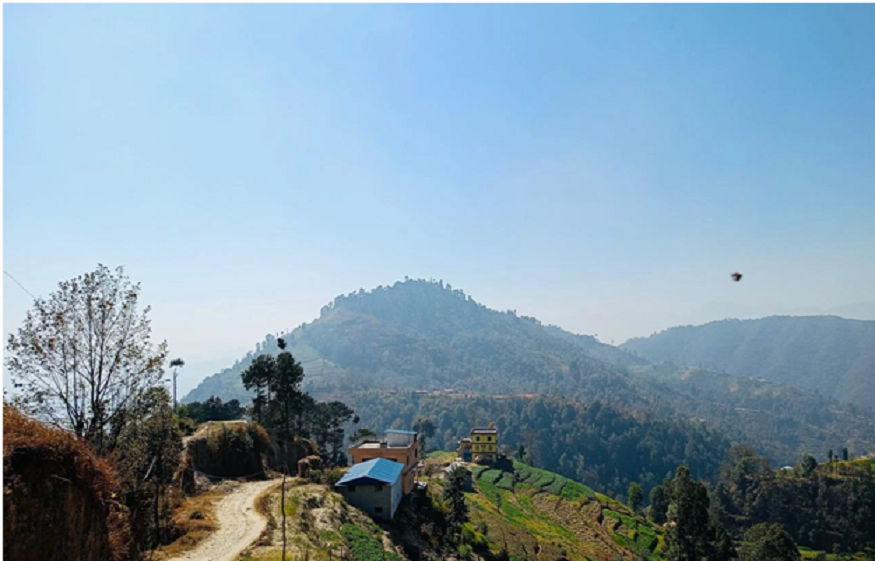Nepal, a nation settled in the lap of the Himalayas, offers a wealthy embroidered artwork of encounters extending from simple day tours to challenging treks. Among its numerous wonders, the Chandragiri Cable Car, Nagarkot-Dhulikhel-Namo Buddha trek, and the Tsum Valley-Manaslu Circuit trek stand out for their one of a kind mix of experience, culture, and picturesque magnificence. Whether you look for a comfortable day trip or a farther mountain enterprise, these goals guarantee a captivating travel. Let’s jump profound into the excellence and involvement of these notorious trails and tours.
Chandragiri Cable Car Day Tour
The Chandragiri Cable Car day tour is one of the most available and picturesque outings close to Kathmandu. Found 16 km southwest of the capital, the Chandragiri Slopes offer breathtaking all encompassing views of the Himalayan run, counting notorious peaks such as Everest, Annapurna, and Manaslu. The cable car ride itself ranges 2.5 km and takes approximately 10 minutes to rise, giving an exciting airborne view of lavish green slopes and the Kathmandu Valley below.At the best, guests can investigate the Bhaleshwar Mahadev Sanctuary, which holds devout centrality in Hindu mythology. The zone too highlights a seeing tower, a children’s stop, and a few eateries, making it a perfect spot for a family trip or a tranquil withdrawal. Past the shocking vistas and social abundance, the Chandragiri Cable Car tour is a culminating mix of cutting edge comfort and normal ponder, making it a must-tour destination.
Nagarkot-Dhulikhel-Namo Buddha Trek
 The Nagarkot-Dhulikhel-Namo Buddha trek is a direct and fulfilling trek that combines picturesque magnificence with social investigation. Beginning from Nagarkot, celebrated for its mesmerizing dawn over the Himalayas, the path winds through terraced areas, pine woodlands, and conventional towns. Nagarkot itself is a prevalent slope station found around 32 km east of Kathmandu, famous for its all encompassing views of the Langtang run and beyond.
The Nagarkot-Dhulikhel-Namo Buddha trek is a direct and fulfilling trek that combines picturesque magnificence with social investigation. Beginning from Nagarkot, celebrated for its mesmerizing dawn over the Himalayas, the path winds through terraced areas, pine woodlands, and conventional towns. Nagarkot itself is a prevalent slope station found around 32 km east of Kathmandu, famous for its all encompassing views of the Langtang run and beyond.
As the trek advances to Dhulikhel, trekkers are treated to impressions of rustic life and antiquated sanctuaries. Dhulikhel, a memorable Newar town, offers a blend of Buddhist and Hindu legacy destinations. The last extend leads to Namo Buddha, a sacrosanct Buddhist trek location. Agreeing to legend, this is where Ruler Buddha, in a past life, advertised his body to a starving tigress and her whelps. The stupa and cloister here are quiet and profoundly enhancing. This trek is culminated for those looking for a mix of characteristic excellence, social understanding, and otherworldly reflection.
Tsum Valley-Manaslu Circuit Trek
The Tsum Valley-Manaslu Circuit trek is an epic journey through a few of the most inaccessible and socially wealthy districts of Nepal. Combining the covered up Tsum Valley with the classic Manaslu Circuit, this trek offers a comprehensive Himalayan enterprise. The Tsum Valley, too known as the “Valley of Joy,” is a sacrosanct Buddhist region close to the Tibetan border. It is known for its antiquated religious communities, Tibetan-influenced culture, and perfect landscapes.
The Manaslu Circuit encompasses Mount Manaslu (8,163 m), the eighth-highest mountain in the world. This path takes you through different biological systems, from subtropical woodlands to elevated landscape. Highlights include crossing the Larkya La Pass (5,106 m), which offers awe-inspiring views of snow-capped peaks. Along the way, trekkers experience conventional Gurung and Tibetan communities, where old traditions and neighborliness persevere. This trek is perfect for prepared trekkers looking for both social submersion and high-altitude adventure.
Manaslu Trekking
The Manaslu region is a less-traveled diamond in the Himalayas, advertising isolation and untainted magnificence. The circuit ordinarily takes 14 to 21 days, covering around 177 km. It starts in Soti Khola and takes after the Budhi Gandaki Waterway, rising through terraced areas and rhododendron timberlands some time recently coming to the snow capped glades and glacier-covered scenes close to Larkya La Pass.
What sets Manaslu trekking apart is its social and biological differing qualities. The path passes through the Manaslu Preservation Region, domestic to imperiled species like the snow panther and ruddy panda. The region is soaked in Tibetan Buddhist conventions, with cloisters, chortens, and supplication wheels speaking the course. Confined zone grants are required, guaranteeing controlled tourism and the conservation of nearby culture. For those looking to encounter the crude excellence of the Himalayas without the swarms of Everest or Annapurna, the Manaslu trek is an idealized choice.
Why Select These Treks
Each of these treks offers a one of a kind point of view on Nepal’s normal and social legacy. The Chandragiri Cable Car is a simple and family-friendly choice, giving breathtaking views without physical effort. The Nagarkot-Dhulikhel-Namo Buddha trek is idealized for those needing a direct experience near Kathmandu with social and otherworldly lavishness. In the interim, the Tsum Valley-Manaslu Circuit trek caters to experienced trekkers longing for inaccessible scenes and social depth.
Choosing these treks implies grasping a range of experiences—from the quietness of mountain religious communities to the excitement of high-altitude passes. They too cater to distinctive wellness levels and time commitments, permitting each traveler to discover a reasonable enterprise. Whether you’re a casual traveler or a prepared mountain dweller, these courses guarantee exceptional recollections and significant bits of knowledge into Nepal’s heart.
Best Time for These Treks
The best time to investigate these trails is amid spring (March-May) and harvest time (September-November). Amid these months, the climate is steady, and perceivability is at its peak, permitting for shocking sees of the Himalayan run. Spring brings dynamic rhododendron blossoms, whereas harvest time offers fresh discussion and clear skies.
Winter (December-February) can be challenging due to snow and cold temperatures, particularly on the Manaslu Circuit. In any case, the Chandragiri Cable Car remains available year-round. Storm season (June-August) brings overwhelming precipitation and avalanches, making trails dangerous and less favorable for trekking.
Travel and Access to These Treks
Reaching these trekking goals is generally clear. The Chandragiri Cable Car base station is a brief drive from Kathmandu, taking approximately an hour by car. For the Nagarkot-Dhulikhel-Namo Buddha trek, open and private vehicles interface Kathmandu to Nagarkot within two hours.
The Tsum Valley-Manaslu Circuit requires more arranging. It begins with a 6-8 hour drive from Kathmandu to Soti Khola. Trekkers are required to secure uncommon grants, counting the Manaslu Confined Zone permit and the Manaslu Preservation Range permit. Enlisting an authorized direct is required for this trek due to its inaccessible nature.
Culture
Nepal’s social mosaic comes alive on these treks. In the Chandragiri Slopes, Hindu conventions are noticeable, with the Bhaleshwar Mahadev Sanctuary drawing pioneers year-round. The Nagarkot-Dhulikhel course highlights Newar and Tamang legacy, with antiquated permitted places and terraced scenes reflecting a concordant relationship with nature.
The Tsum Valley and Manaslu region offer a profound jump into Tibetan Buddhism. Supplication banners ripple in the wind, and age-old cloisters like Mu Gompa give otherworldly havens. Intuitive with local people uncover a way of life formed by the mountains and a significant respect for nature and religion.
Sustainability and Responsible Trekking
Responsible trekking is pivotal to protecting Nepal’s delicate biological systems and social legacy. Travelers are energized to take after Take off No Follow standards, minimize plastic utilization, and bolster neighborhood businesses. In the Manaslu region, the controlled permit framework makes a difference to ensure the environment and guarantees maintainable tourism practices.
Choosing eco-friendly lodging, regarding nearby traditions, and trekking with authorized administrators contribute to the region’s supportability. These activities cultivate positive community engagement and ensure the perfect excellence for future generations.
Tips to Enjoy Your Tour
Prepare Physically: Whereas the Chandragiri tour requires negligible exertion, the treks request great physical wellness. Prepare with standard climbs and cardiovascular exercises.
Pack Shrewd: Basics incorporate layered clothing, strong trekking boots, sunscreen, and a to begin with help unit. For Manaslu, carry cold-weather adapt and elevation ailment medication.
Respect Neighborhood Culture: Dress unassumingly, inquire some time recently taking photographs, and take after cloister etiquettes.
Stay Hydrated: Drink bounty of water to anticipate elevation affliction and dehydration.
Engage with Local people: Learn a few Nepali expressions and submerge yourself in neighborhood conventions for a wealthier experience.
Conclusion
Exploring Chandragiri, Nagarkot, and Manaslu offers a significant association to Nepal’s common splendor and social profundity. Whether you look for a fast getaway or an epic mountain enterprise, these goals convey exceptional encounters. Grasp the magnificence, culture, and challenge of these trials whereas supporting economical tourism and protecting the Himalayas’ perfect charm.
FAQs
- Is the Chandragiri Cable Car appropriate for all age groups?
Yes, the Chandragiri Cable Car is secure and open for individuals of all ages.
- Do I require a direct for the Manaslu Circuit?
Yes, contracting an authorized direct is obligatory for the Tsum Valley-Manaslu Circuit trek.
- What licenses are required for the Manaslu trek?
You require a Manaslu Confined Zone permit and a Manaslu Preservation Range Permit.
- What is the trouble level of these treks?
Chandragiri is simple, Nagarkot-Dhulikhel is direct, and the Manaslu Circuit is challenging.
- How do I minimize my natural affect when trekking?
Follow Take off No Follow standards, maintain a strategic distance from plastic, and back neighborhood eco-friendly administrations.
Booking Process byTrekking Guide Team Adventure :
To book any of these treks tours through Trekking Guide Team Adventure Pvt. Ltd., begin by contacting them via email at [email protected] or phone or WhatsApp at +977 9851229400 to discuss your preferred dates, group size, and specific needs. They will provide a detailed itinerary covering these trek’s duration, highlights, cost, and inclusions such as a guide, porter, meals, accommodation, and transportation.
Prior to the trek, you will receive a comprehensive pre-trek briefing with essential information on packing, fitness preparation, and altitude acclimatization. The agency will finalize all logistical arrangements, including transportation, accommodation, and permits, to ensure everything is in place for your trek. Upon arrival in Nepal, the team will ensure that all aspects of the trek are organized, providing you with a smooth and unforgettable experience on these treks.

